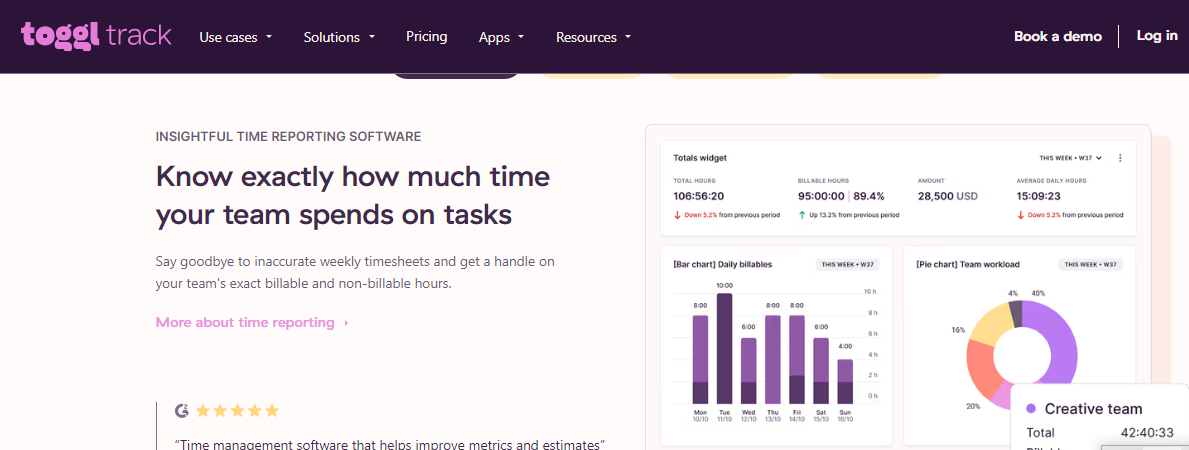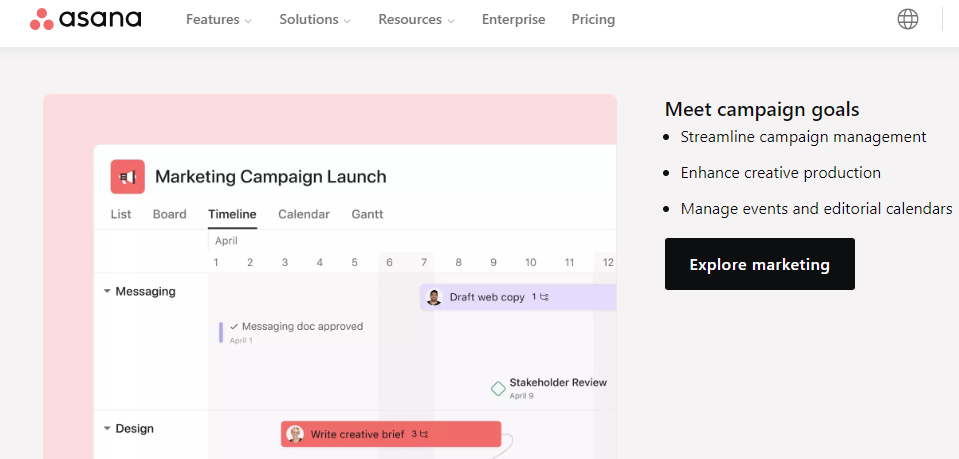Understanding the difference between billable and actual hours is important for various reasons. Likewise, it is crucial for billing practices and getting billing accuracy.
Billable hours are the time spent working directly on projects or tasks for a client that brings in revenue. This could include:
- Meetings with clients
- Executing projects
- Other tasks directly related to a client’s work.
On the other hand, actual hours include all hours worked. This includes non-billable operational overhead and non-billable tasks. These can involve:
- Administrative work
- Team meetings
- Training and development
- Internal communication
- Internal meetings
- Administrative work
- Training
By using time tracking mechanisms, businesses can figure out their billable utilization rate. This ensures revenue isn’t lost on activities that don’t directly contribute to productivity.
Actual hours meaning and introduction to billable hours
Billable and actual hours refer to the time spent on billable projects and non-billable tasks respectively. Billable hours are essential for billing accuracy.
On the other hand, actual hours are necessary for the operation of the organization but they don’t directly generate revenue.
Keeping a balance between these two is important for ensuring productivity and billable utilization. This requires the following things:
- Tracking time accurately
- Setting clear billing policies
- Regular performance reviews
- Using time management tools
- Effective time tracking
- Accurate attendance tracking
- Understanding the impact on benefits eligibility, overtime pay, and the total hours worked
Definition of billable hours
Billable hours are the amounts of an employee’s time that can be charged to a client. They are the main part of billing practices in service industries and are crucial for billing accuracy. This concept involves recording time spent on billable projects as well as any non-billable tasks or non-billable operational overhead.
The quantity of billable client hours logged and the company’s hourly rate will determine the total charge to the client. Higher billable utilization generally signals more revenue-generating work.
Definition of actual hours meaning
“Actual hours” means the total time an employee works in a certain period. It includes time spent on tasks for clients (billable hours) and other tasks (non-billable hours).
Billable hours are for work that makes money and projects that can be billed. Non-billable hours are for other work tasks. These hours are important for measuring how much work is done and for keeping track of attendance.
Actual hours are also important for billing and making sure bills are correct. They often relate to how much an employee gets paid per hour. They can affect if an employee can get benefits and how much they get paid for overtime.
Contracted hours vs actual hours
Understanding contracted hours
Contracted hours refer to the number of work hours agreed upon in a contract between a freelancer or employee and their client or employer. These hours are typically fixed and define the expected time commitment for a project or job. For example, a freelancer might have a contract specifying 20 hours per week to complete a marketing campaign.
Contracted hours help set clear expectations and are often used to calculate billing or salary. In 2024, many freelance contracts specify hourly commitments ranging from 10 to 40 hours weekly, depending on project scope. Tools like HelloBonsai allow freelancers to track and manage these contracted hours efficiently.
Knowing your contracted hours is essential for planning your workload and ensuring you meet client expectations. Always review your contract carefully to confirm these hours before starting work, as they form the baseline for invoicing and performance measurement.
Defining actual hours and why they matter
Actual hours represent the real time spent working on a task or project, which may differ from contracted hours. For instance, if a project requires unexpected research or revisions, the actual hours could exceed the contracted 20 hours per week. Tracking actual hours helps freelancers and small business owners understand true effort and resource use.
In 2024, using time-tracking tools like Toggl Track or Harvest can provide precise records of actual hours worked. This data is crucial for accurate billing, especially when contracts include clauses for overtime or additional work beyond contracted hours. It also helps identify inefficiencies or scope creep early.
By comparing actual hours against contracted hours regularly, you can adjust project timelines, renegotiate contracts, or improve time management. This practice safeguards your income and ensures transparency with clients.
How to manage differences between contracted and actual hours
Managing the gap between contracted and actual hours starts with clear communication. If you anticipate exceeding contracted hours, inform your client promptly and discuss options such as additional billing or deadline extensions. This proactive approach avoids misunderstandings and maintains trust.
Using project management software like Asana or Monday.com alongside time-tracking apps helps freelancers monitor progress against contracted hours in real time. For example, setting alerts when you reach 80% of contracted hours can prompt early discussions about workload adjustments.
Finally, document all agreed changes to contracted hours in writing to protect both parties. This ensures that invoicing reflects actual work done and prevents disputes. Regularly reviewing your contracts and actual hours also helps refine future project estimates for better accuracy.
Why actual hours meaning matters compared to billable hours
Know the difference between billable and actual hours to ensure billing is correct and fair. This distinction helps clarify:
- The total hours worked
- Overtime calculations
- Employee productivity assessments
- Attendance tracking
- How much work makes money
- Set the pay rate for billable hours
- Account for non-billable work
Good time tracking distinguishes billable projects from non-billable tasks. This distinction helps calculate total hours worked and overtime pay. It also assists with attendance tracking and provides a clear view of an employee’s billable work and total productivity.
Impact on profitability
How a company bills greatly affects its profits. Accurate billing and tracking of billable hours are essential. Mistakes in these areas can lead to lost revenue or disagreements that harm profits.
Monitoring total hours worked and overtime pay ensures profitable outcomes. Aligning pay rates per hour with profitability goals is crucial for business growth.
Effect on employee productivity
Proper billing practices significantly impact employee productivity. Knowing the difference between billable and non-billable work helps employees focus on tasks that generate revenue.

Using time-tracking tools improves billing accuracy. These tools enable precise calculation of billable projects versus non-billable tasks. A thorough attendance tracking system also ensures honesty when recording total hours worked.
This level of organization boosts employee productivity. It helps them focus on work and builds confidence through transparent pay practices.
How to calculate billable hours
To calculate billable hours, you need a reliable time-tracking system. This system records total hours worked on billable projects separately from non-billable tasks and other work.
Tracking billable hours correctly is vital for accurate client billing and proper record-keeping.
To figure out billable hours, you need to track them first. Then, multiply them by the pay rate per hour. This rate might go up for overtime depending on how the company bills.
Remember, a high use of billable hours means more work that makes money. It can also affect if an employee can get benefits.
Understanding the billable hour rate
Knowing the rate for billable hours is crucial to reviewing billing practices. It ensures billing is accurate. The pay rate per hour is calculated based on work that generates revenue, hours worked for clients, and billable projects. It also considers non-billable tasks and other work.
Time tracking is used to figure out total hours worked. Good attendance tracking helps with productivity and the use of billable hours. By understanding how these things relate, one can improve billing methods and business revenue.
Factors influencing billable hours
Billable hours are affected by factors such as billing practices and time tracking. Good billing practices are essential to ensure billing is accurate. They confirm hours worked for clients are recorded correctly.
Time tracking can help tell the difference between projects that can be billed and tasks that can’t be billed. Also, businesses that manage their use of billable hours well can increase their total hours worked. This improves productivity and focuses more on work that makes money.
In addition, other factors can also affect billable hours. These include:
- Billing practices
- Time tracking
- Attendance tracking
- Overtime calculation
- Non-billable tasks
- The pay rate per hour
- Overtime pay
So, good attendance tracking is very important. Understanding these things well can help businesses lower other work and improve their overall performance.
How to calculate actual hours meaning
Figuring out actual hours worked includes all hours spent on client work and revenue-generating projects. This can be done using time-tracking tools. These tools track total hours worked, including overtime and non-billable tasks.
Calculating the correct pay rate per hour also helps determine actual hours. This includes factors like employee benefits that may affect overall billing practices.
Good attendance tracking systems provide an accurate view of productivity. They also ensure the billing process is correct.
Tracking employee work hours
Good time tracking is at the heart of billing practices and improving productivity in a company. It helps make sure billing is correct by tracking hours worked for clients on projects that make money. This difference is very important in figuring out an employee’s use of billable hours.

Tracking total hours worked helps calculate overtime pay, determine eligibility for employee benefits, and manage non-billable tasks.
Remember, tracking attendance along with information on the pay rate per hour helps prevent overpayment issues. This makes sure billing practices are cost-effective.
Considerations for overtime and breaks
When considering overtime and breaks, accurate time tracking is essential. It determines total hours worked and affects overtime pay and employee benefits eligibility.

Good management helps with billing practices and keeps billing correct. It’s important to distinguish between projects that can be billed, those that drive productivity and revenue, and tasks that cannot be billed.
Understanding this difference helps make the best use of billable hours and manage the pay rate per hour.
Examples of actual hours worked in a sentence
Using actual hours in project time tracking
Actual hours refer to the real time spent completing a task or project, rather than estimated or budgeted hours. For example, a freelancer might say, "The actual hours worked on the website redesign totaled 35, exceeding the initial estimate of 30." This distinction clarifies planned versus real time spent.
Tracking actual hours helps freelancers and small business owners manage their workload and billing accurately. Time-tracking tools like Toggl Track and Harvest allow users to log precise hours spent on each project, making statements about actual hours reliable and verifiable.
To apply this in your work, start recording your time daily and compare it with your estimates. This practice improves future project planning. It also ensures clients are billed fairly based on actual hours worked.
Clarifying billing and invoicing with actual hours
Including actual hours in invoices ensures transparency between freelancers and clients. A typical sentence might read, "Invoice #123 reflects 20 actual hours worked on content creation at a rate of $50 per hour." This statement directly ties billable hours to the real time invested.
Using actual hours in billing prevents disputes over time charges and helps freelancers justify their fees. Platforms like HelloBonsai provide invoice templates that automatically calculate totals based on logged actual hours, simplifying this process.
Make it a habit to document and communicate actual hours clearly in your invoices. This builds trust and reduces the chance of payment delays or disagreements.
Describing actual hours in employment and contract agreements
Employment contracts often specify actual hours to define work expectations. For example, "The contractor shall report actual hours worked weekly to ensure compliance with the 40-hour workweek limit." This usage emphasizes accountability and record-keeping.
In freelance agreements, stating actual hours clarifies payment terms. A sentence might say, "Payment will be based on actual hours worked as recorded in the time tracking system." This protects both parties by linking compensation to verifiable work time.
When drafting contracts, explicitly mention how actual hours will be tracked and reported. This clarity prevents misunderstandings and supports smooth project execution.
Common misconceptions about billable and actual hours
There’s a common misunderstanding about the difference between hours worked for clients (billable hours) and other work (non-billable overhead).
Many people confuse that not all total hours worked can be billed. Some tasks are non-billable but necessary and don’t directly generate revenue.
Track time correctly to ensure billing is accurate. Time tracking software helps you do this effectively.
Overtime pay and eligibility for benefits are based on total hours worked, not just billable hours.
Billable hours as a measure of productivity
Billable hours are a very important measure of productivity in many industries. Billing practices and accuracy are crucial to make sure hours are worked for clients, etc.
Other work, like tasks that can’t be billed and time spent tracking attendance or determining if an employee qualifies for benefits, should be kept to a minimum.
Tools for tracking time and figuring out total hours worked, including overtime pay, are important for making sure billing is correct. The goal is to make the most money per hour from billable hours while keeping productivity high.
Actual hours as a measure of employee value
Figuring out an employee’s value can be linked to things like total hours worked, hours worked for clients, and productivity. It’s important to think about the difference between tasks that can’t be billed and projects that can be billed.
Businesses should consider other work that factors into overall company expenses. These factors also play a big role in evaluating an employee’s value:
- Time spent on non-billable tasks
- Attendance and punctuality
- Productivity metrics
- Overtime hours
- overtime pay
- hourly rate
- employee benefits
Using good attendance tracking and solid billing practices helps keep billing correct.
Tools for tracking billable and actual hours
Effective tools for tracking time are important for keeping the balance between hours worked for clients and other work. They play a big role in making sure billing is correct. It makes sure each hour spent on projects that can be billed is accounted for and paid correctly.
This includes tracking overtime pay and total hours worked. It also involves managing changes to the pay rate per hour.
Such tools also provide information needed to determine:
- Total billable hours
- Non-billable work
- Overtime calculations
- Pay rate adjustments
- If an employee can get benefits
- Tracking attendance
- Figuring out the use of billable hours
Moreover, they can help tell the difference between work that makes money and tasks that can’t be billed.
Using time tracking software like Toggl
Using time tracking software like Toggl can greatly improve billing practices and make sure billing is correct. By keeping a close eye on hours worked for clients versus other work, you can make your team’s productivity better and focus on work that makes money. The software effectively tracks total hours worked.

Time tracking software is not limited to billing projects; it also logs tasks that can’t be billed. This offers a comprehensive view of your team’s activities. Additionally, it helps track attendance, providing a clear overview of billable hours and pay rates.
Benefits of project management tools like Asana
Project management tools like Asana help improve a company’s productivity. They give a good structure for tracking projects that can be billed. This makes sure billing is correct and keeps track of total hours worked.

Asana enhances time tracking efficiency, which is crucial for accurate billing. Accurate logs of hours worked for clients and other tasks make it easier to calculate the correct pay rate and overtime pay.
Frequently asked questions about actual and contracted hours
What is the actual hours meaning in a work context?
Actual hours refer to the real amount of time an employee or freelancer spends working on a task or project. Unlike contracted hours, which are the agreed-upon hours set in a contract, actual hours track the precise time logged during work activities. For example, if your contract states 40 hours per week but you only work 35 hours, your actual hours are 35.
Understanding actual hours is crucial for accurate billing and payroll. Tools like Toggl Track and Clockify help freelancers and small business owners record actual hours effortlessly. These tools provide detailed reports that ensure you get paid for the exact time worked, avoiding underpayment or disputes.
To manage your actual hours effectively, start by setting clear expectations with clients or employees. Use time-tracking software to log hours daily and review them weekly. This practice helps maintain transparency and improves project planning accuracy.
How do actual hours differ from contracted hours?
Contracted hours are the fixed number of hours agreed upon in a work contract, often reflecting standard workweeks like 40 hours. Actual hours, however, represent the real time spent working, which can be more or less than contracted hours. For instance, a freelancer contracted for 20 hours per week may end up working 25 actual hours if the project demands it.
This difference matters for payroll and invoicing. If actual hours exceed contracted hours, freelancers should invoice for the extra time, provided the contract allows it. Conversely, if actual hours are fewer, payment might be adjusted accordingly. Platforms like HelloBonsai offer contract templates specifying how to handle these scenarios to protect both parties.
To avoid confusion, clarify in your contract how actual hours will be tracked and billed. Specify overtime rates or penalties for underperformance. This clarity helps maintain good client relationships and ensures fair compensation.
Can actual hours affect project deadlines and budgets?
Actual hours directly impact project timelines and budgets because they reflect the true effort spent. If actual hours exceed estimates, projects may run late or cost more than planned. For example, a small business budgeting 100 hours for a website build might face delays if actual hours reach 130.
Using project management tools like Asana or Monday.com alongside time trackers can help monitor actual hours in real time. These platforms allow you to compare planned hours versus actual hours, enabling proactive adjustments to deadlines or scope before issues escalate.
To keep projects on track, regularly review actual hours and communicate changes with clients. Adjust budgets or deadlines early to avoid surprises. This proactive approach reduces stress and improves client satisfaction.
How can freelancers and small businesses accurately track actual hours?
Accurate tracking of actual hours starts with choosing the right tools. Time-tracking apps like Harvest, RescueTime, and HelloBonsai’s built-in timer are popular choices in 2024. These tools allow you to start and stop timers for tasks, categorize work, and generate detailed reports for invoicing.
Consistency is key. Make it a habit to log hours immediately after completing work sessions to avoid forgetting details. For example, a freelancer working on multiple projects should track each project separately to maintain clarity and accurate billing.
Additionally, review your logged hours weekly to ensure accuracy and identify any discrepancies early. Sharing these reports with clients can build trust and streamline payment processes. Implementing these habits will help you manage your time and income more effectively.
Best practices for managing billable and actual hours
Efficient billing practices need careful tracking of hours worked for clients and other work. This needs reliable and correct systems for tracking time that record total hours worked on projects that can be billed. Plus, it includes tasks that can’t be billed. This data helps figure out the use of billable hours.
Consistent tracking of attendance is needed, highlighting each employee’s commitment to their work that generates revenue. This practice helps with the following:
- Monitoring work hours
- Ensuring payroll accuracy
- Evaluating employee productivity
- Supporting project budgeting
- Minimizes differences
- Builds trust with clients
- Makes sure the business is financially healthy
Establishing clear policies
Setting clear policies for billing practices is critical to make sure billing is correct. These policies should cover things like projects that can be billed and tasks that can’t be billed. As a result, it will improve the use of billable hours.
Set clear rules for tracking time with specific guidelines for:
- Logging start and end times
- Recording breaks
- Handling overtime
- Approving time entries
- Total hours worked
- Overtime pay
- Other work.
Employees should understand the difference between work that makes money and other tasks, affecting if they can get benefits and productivity. Policies should also include guidelines for tracking attendance to monitor adherence.
Regularly reviewing and adjusting rates
One very important part of managing a business efficiently is regularly reviewing and adjusting rates. This basic procedure improves billing practices and increases billing accuracy.
Effective tracking of attendance improves productivity and helps the business focus more on work that makes money as opposed to other overheads.
The pay rate per hour should reflect this perfect balance - charging clients fairly while covering overhead costs. It is very important to revise periodically to keep the use of billable hours at its peak.
Conclusion: Balancing billable and actual hours for agency success
An agency needs to keep a balance between hours worked for clients, tasks that can’t be billed and operational overhead for overall success. Correct tracking of time and effective billing practices improve the accuracy of billing. As a result, it reduces lost revenue.
Efficient management of projects that can be billed, if an employee can get benefits, and overtime pay also improves productivity. It makes sure the agency is engaged in work that makes money.
Total hours worked and pay rate per hour should be monitored using correct systems for tracking attendance. This optimal balance maximizes the use of billable hours and aligns with the agency’s working protocol and monetary goals.







